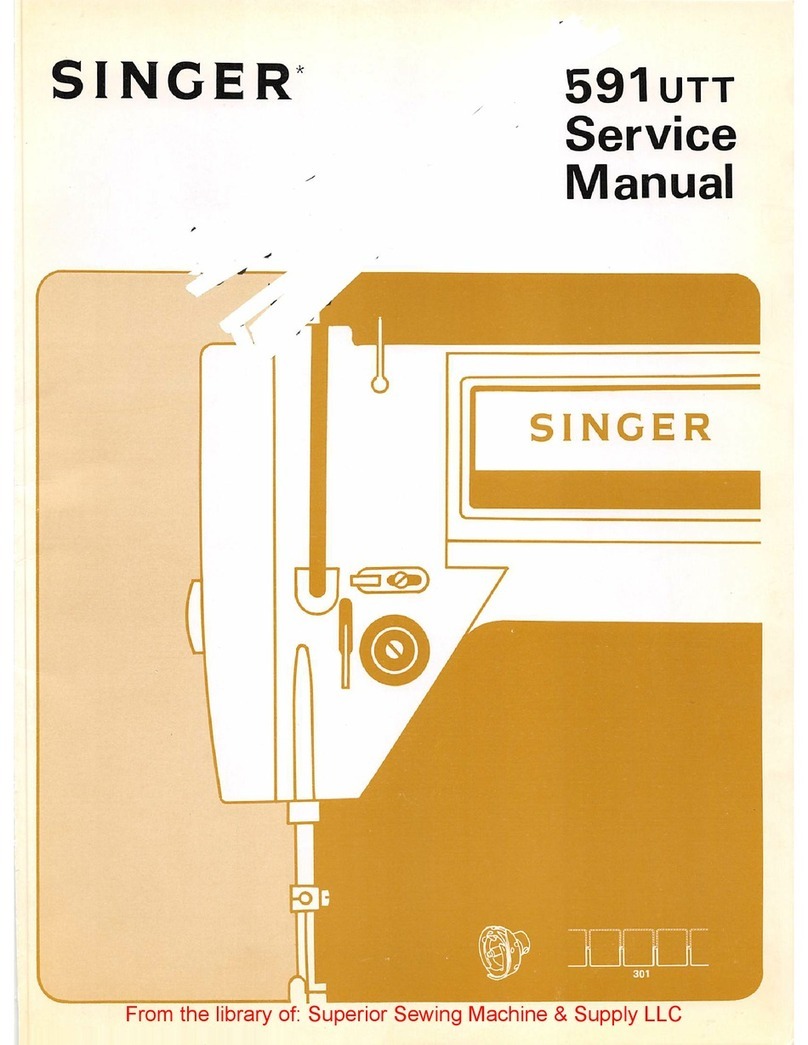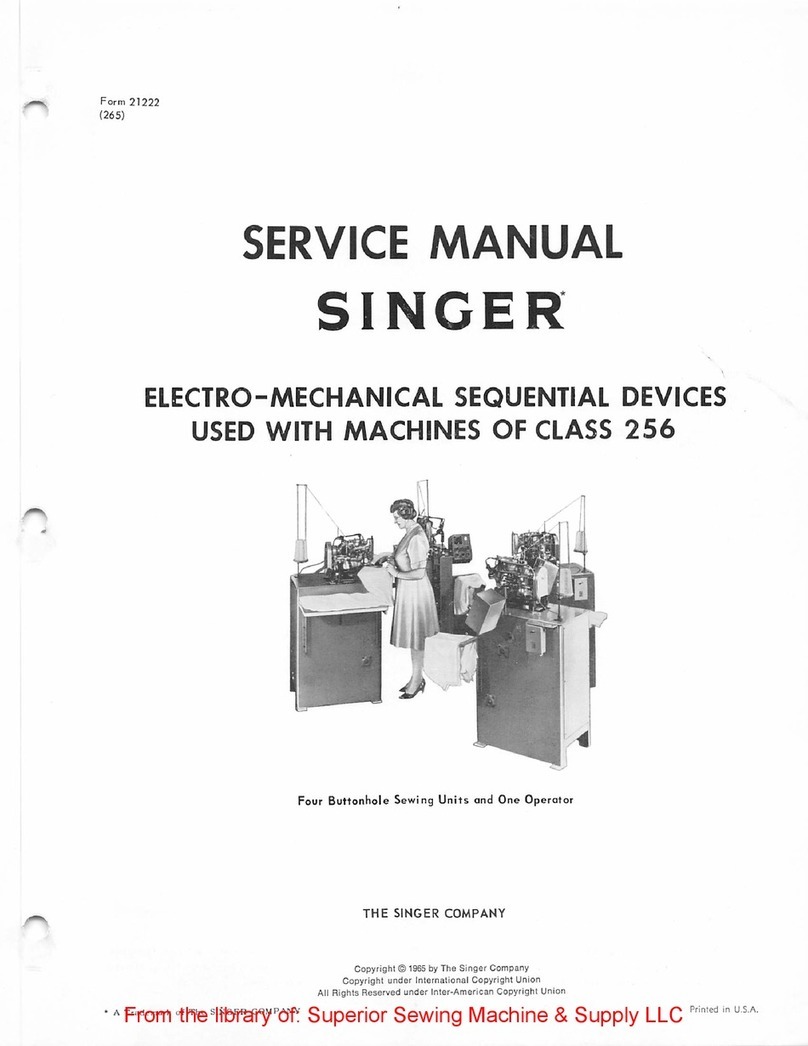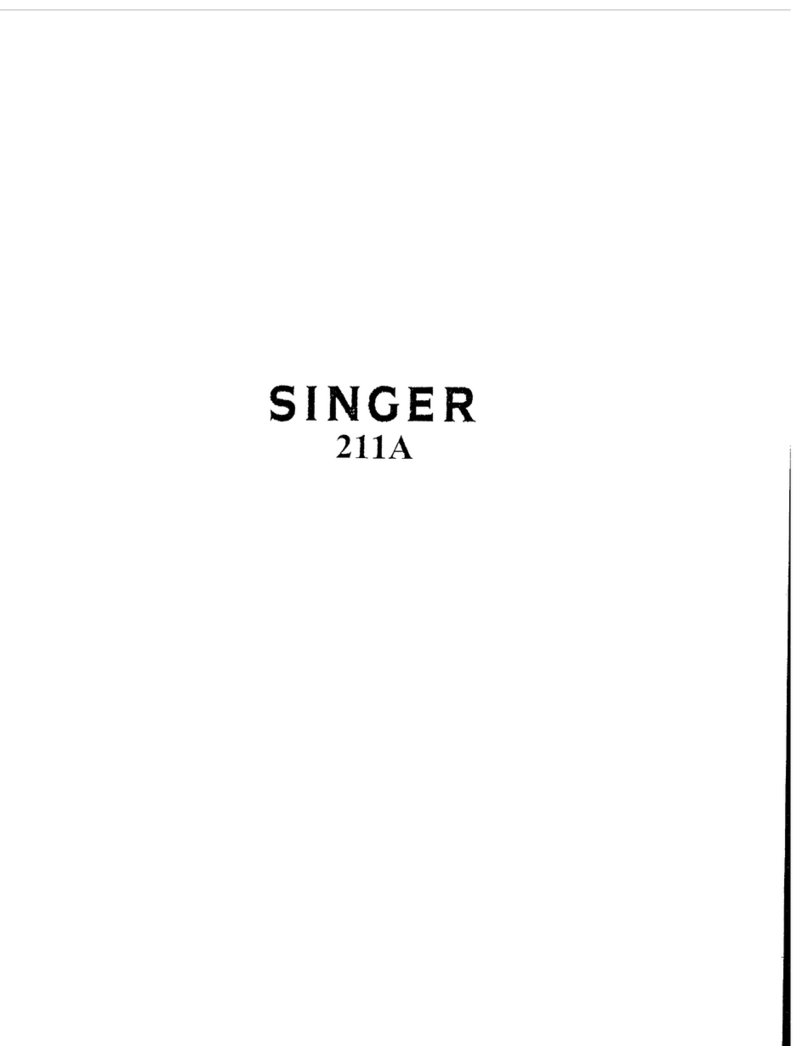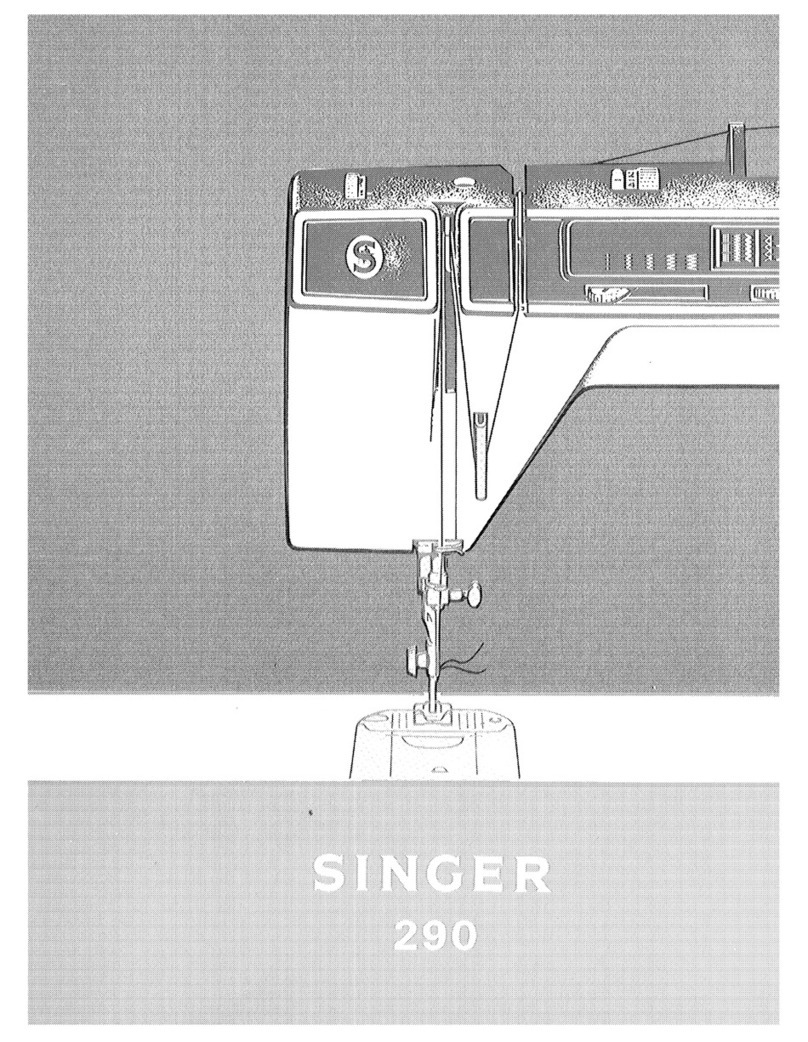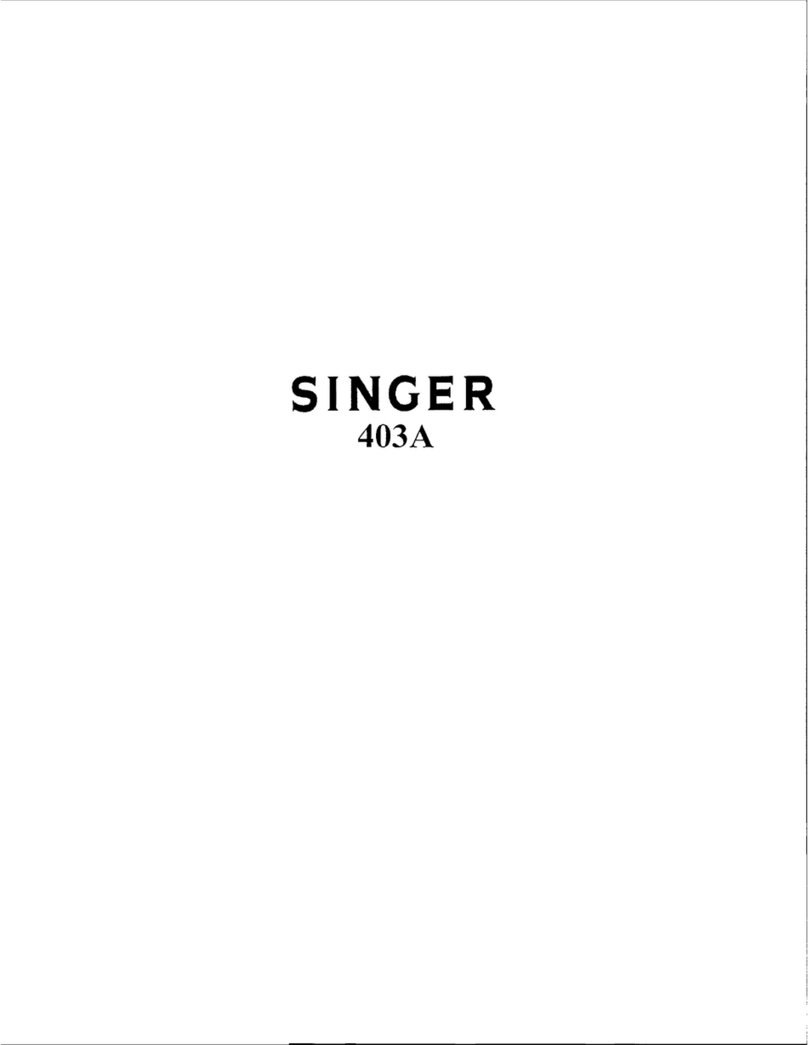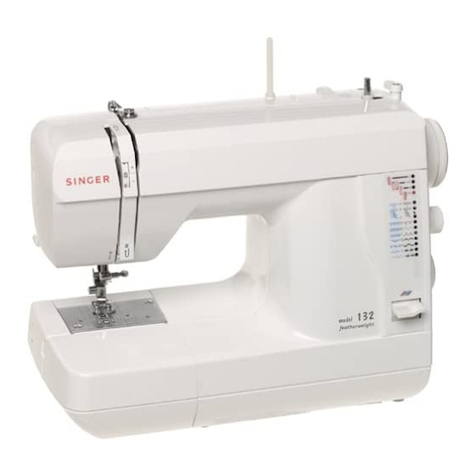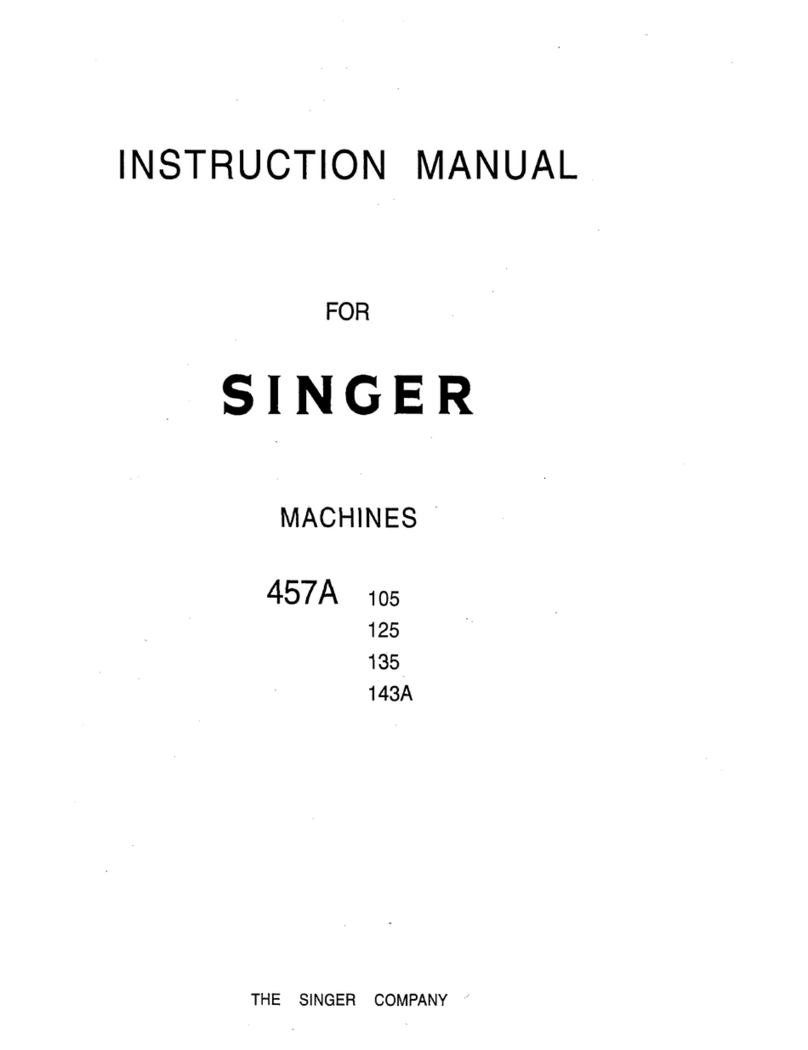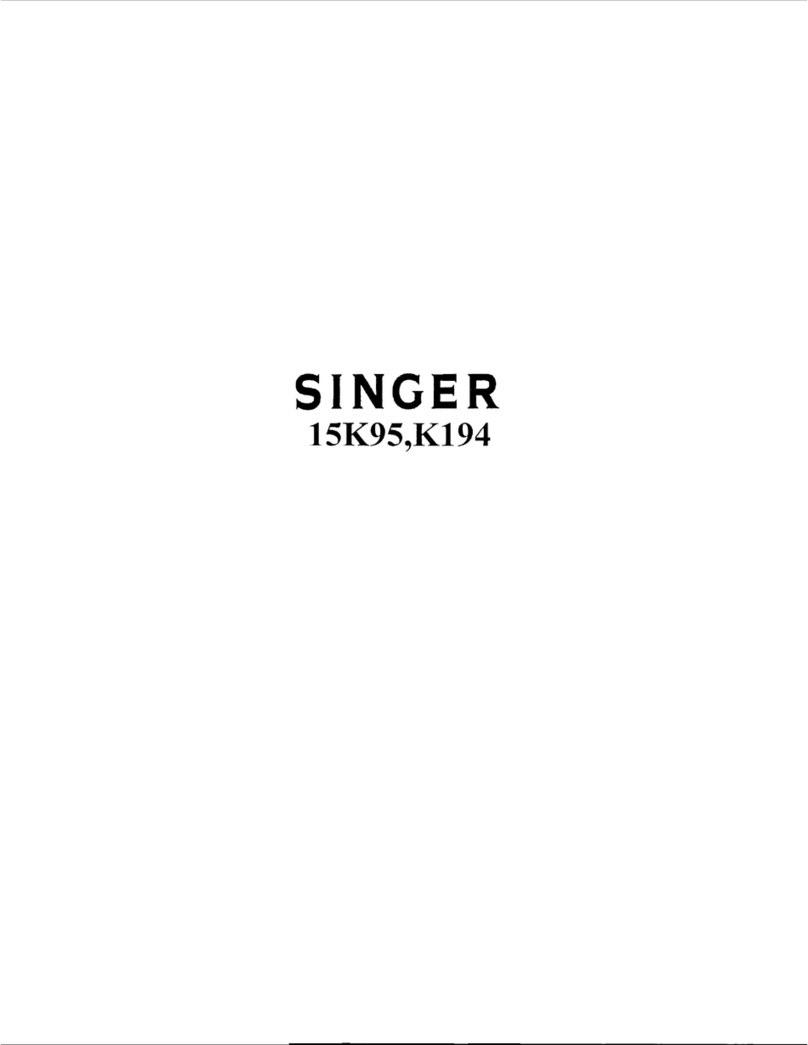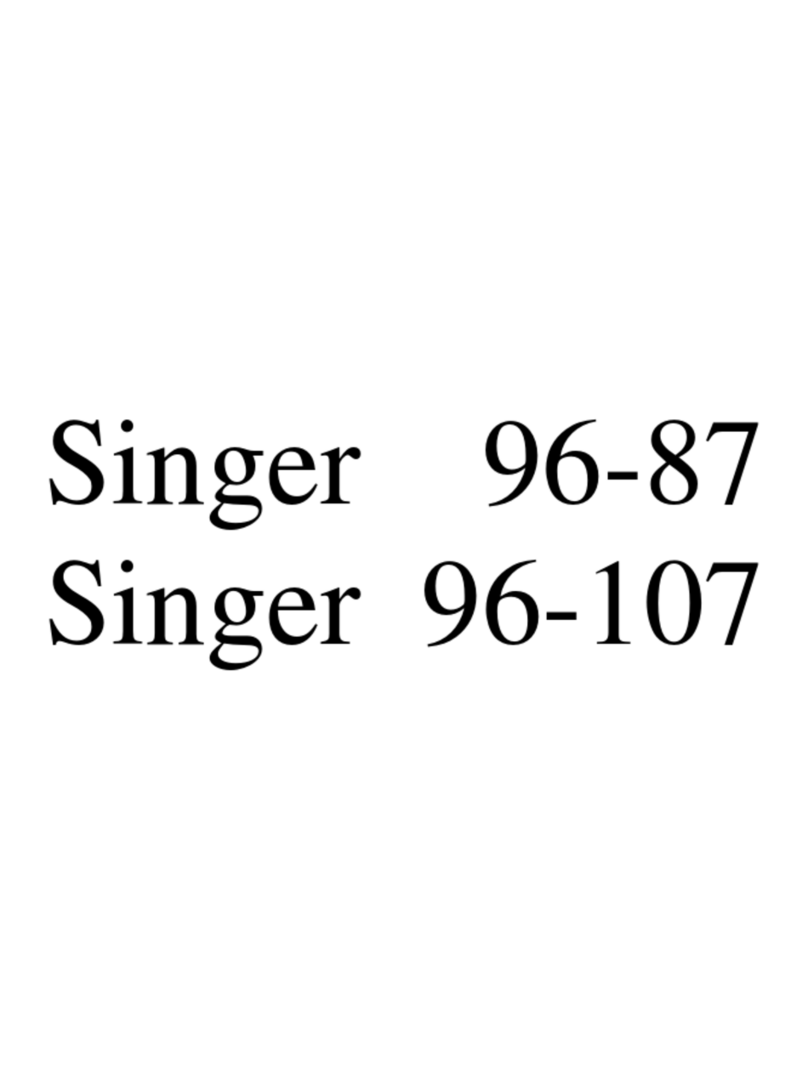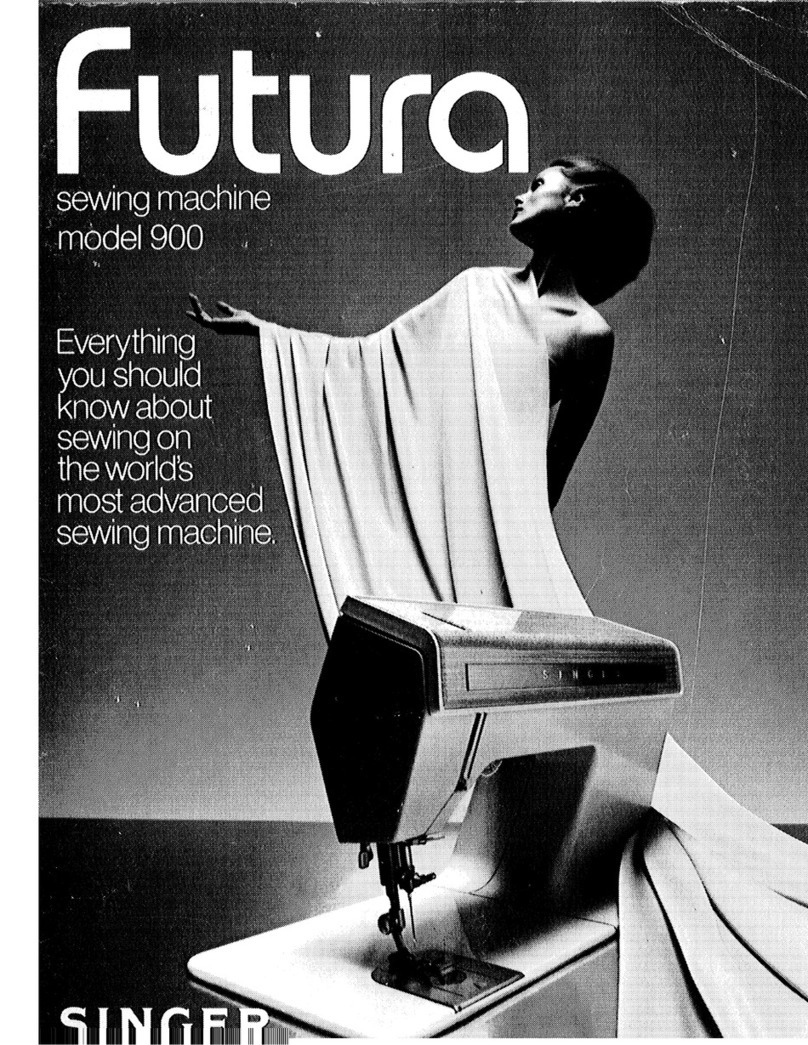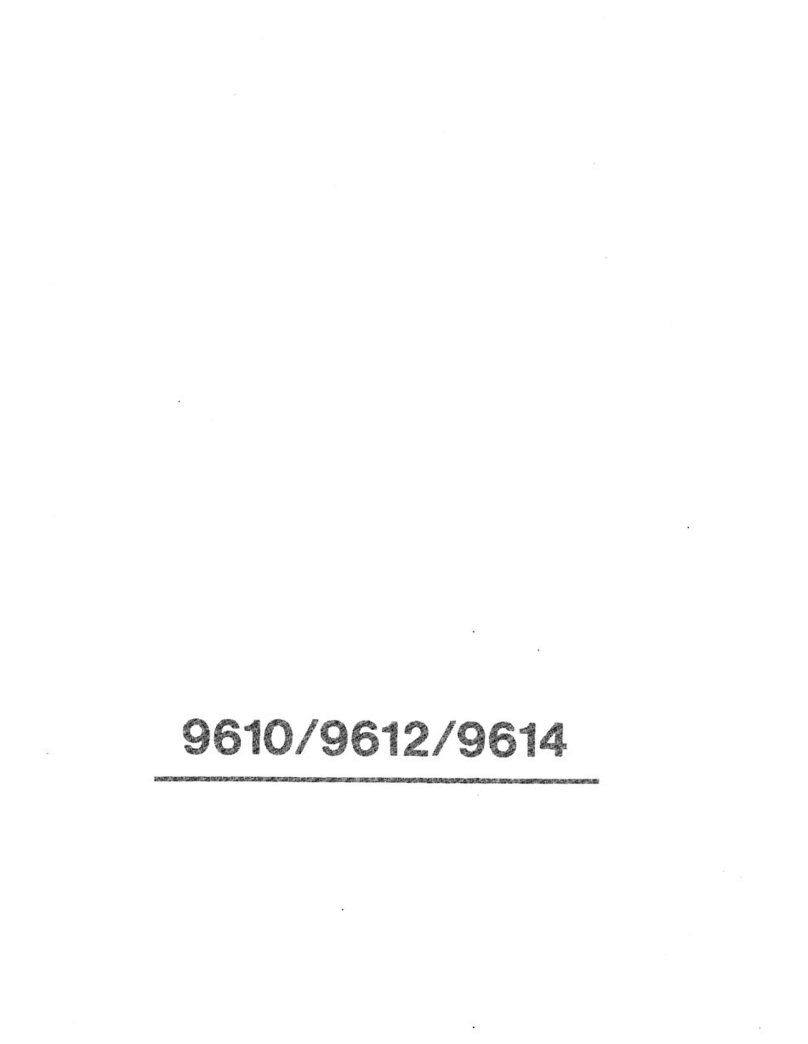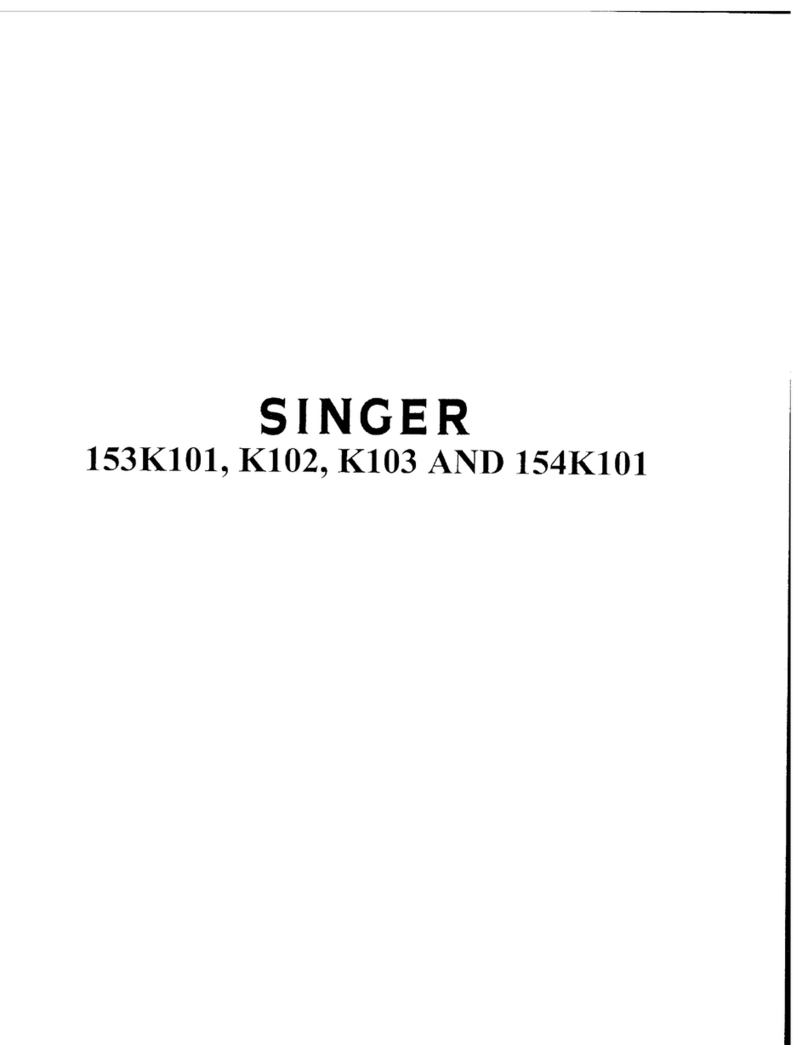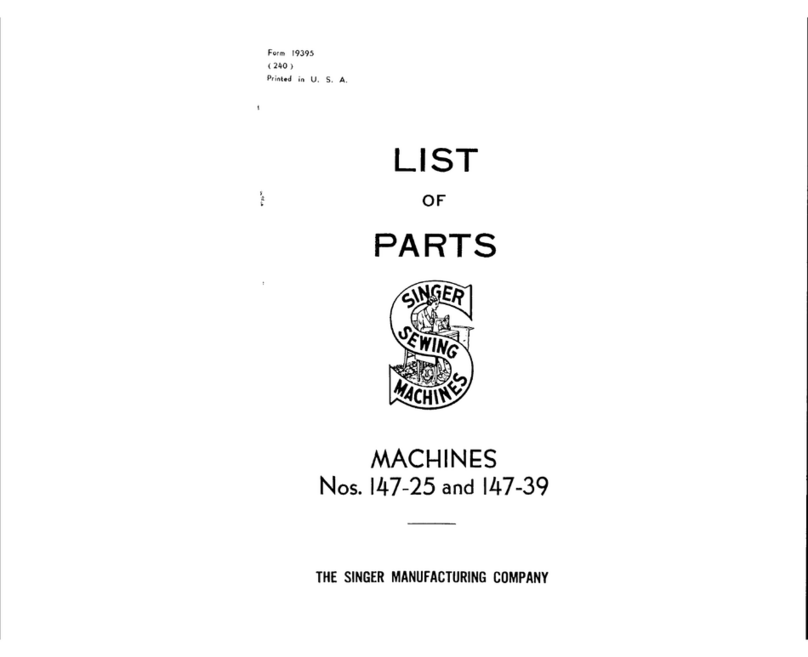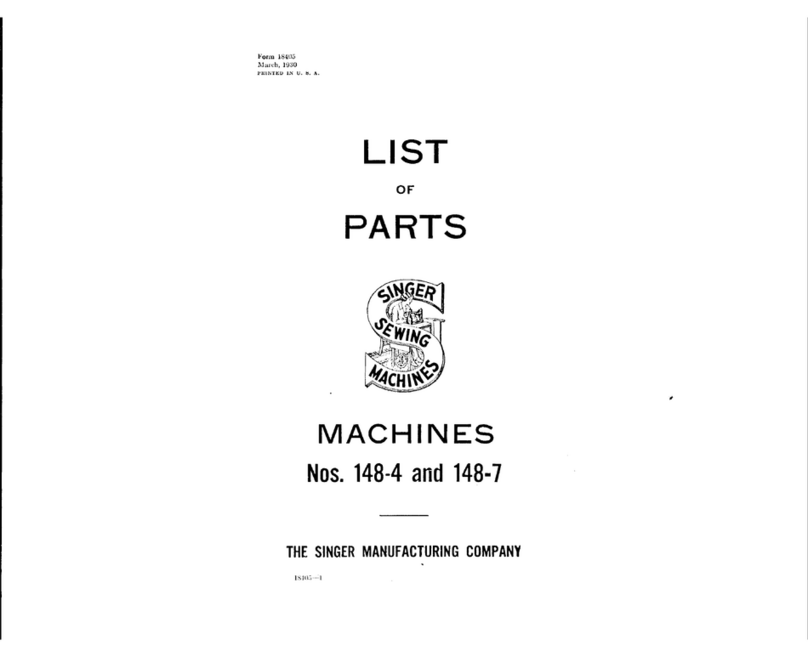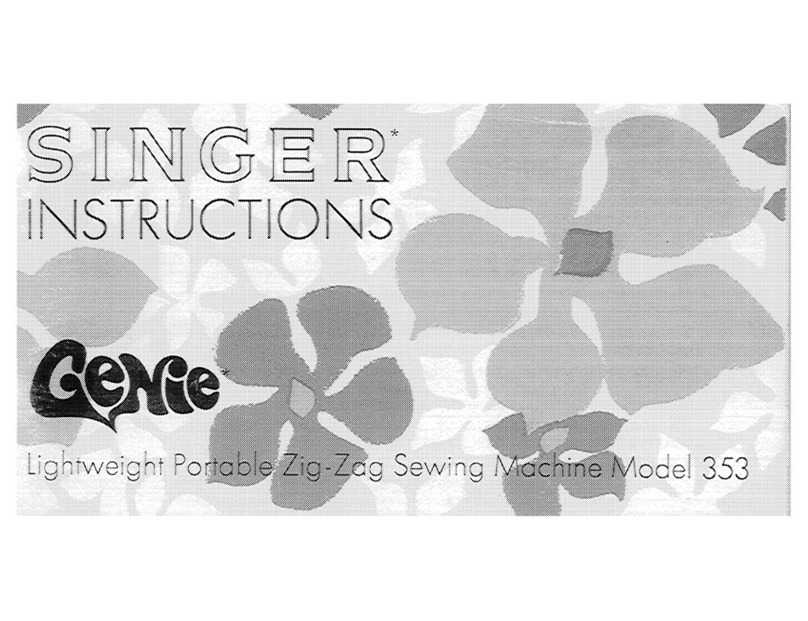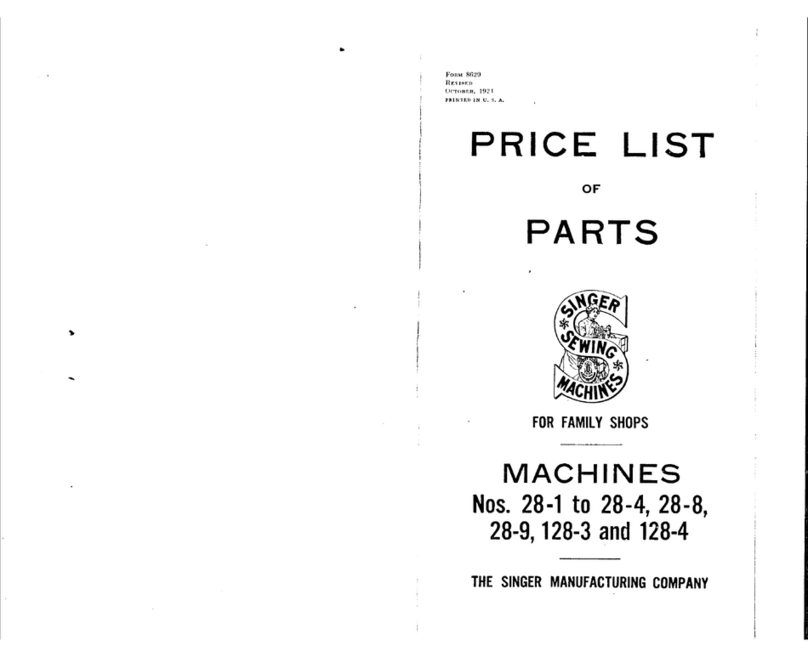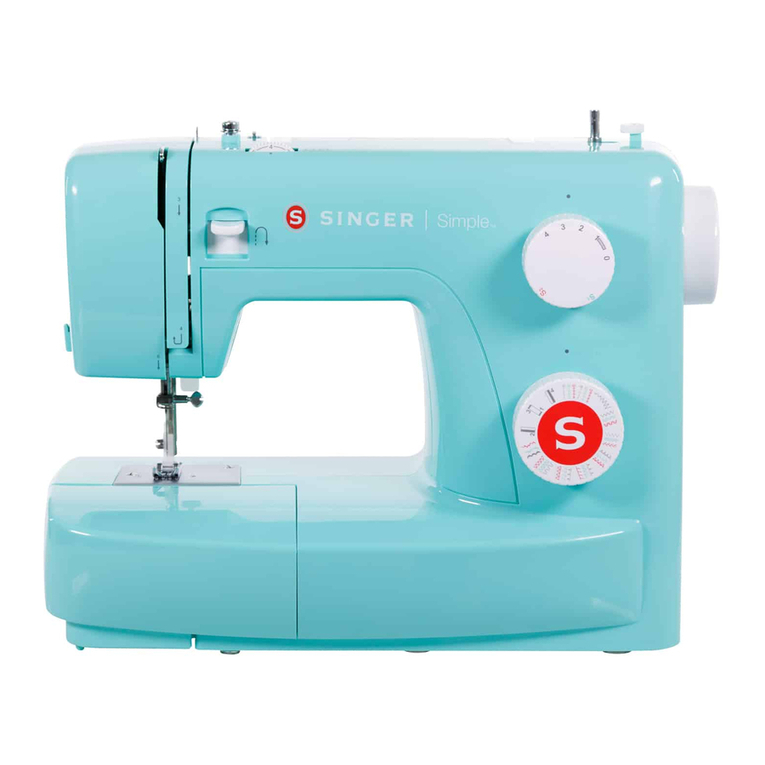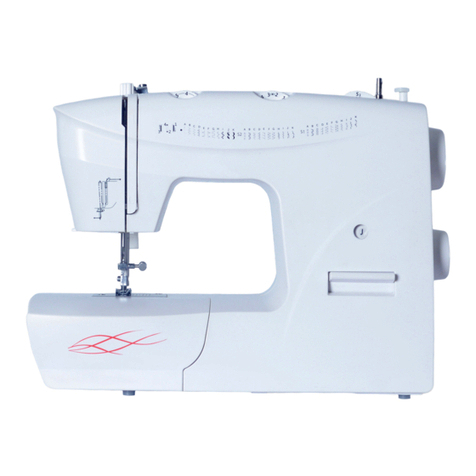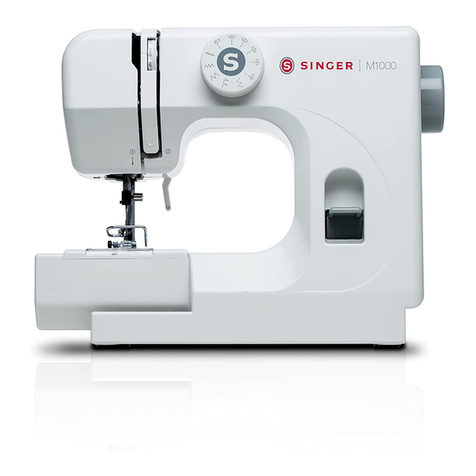2
IMPORTANTES INSTRUCCIONES DE SEGURIDAD
Cuando se usa un aparato eléctrico, debe seguirse unas precauciones básicas y que vienen incluidas a continuación.
“Leer las instrucciones antes de usar la máquina de coser.”
PELIGRO
-
Para reducir el riesgo de una descarga eléctrica.-
1. La máquina no debe dejarse nunca desatendida mientras esté conectada. Desconectar la máquina de la red eléctrica
inmediatamente después de su uso y antes de limpiarla.
CUIDADO
-
Para reducir el riesgo de quemaduras, fuego, descargas eléctricas o causar daños a personas.
1. “No usar la máquina como un juguete.”
Prestar atención si fuese necesario cuando la máquina está siendo usada por niños o cerca de ellos.
2. “Este aparato no está destinado al uso por personas (incluyendo niños) con una reducción de física, sensorial o mental,
capacidad, o falta de experiencia y el conocimiento, a menos que se les ha dado la supervisión o las instrucciones de
utilización del aparato por una persona responsable de su seguridad. Los niños deben ser supervisados para asegurarse de
que no juegan con el aparato.”
3. “Usar la máquina de coser solamente como se describe en este manual.
8VDU~QLFDPHQWHORVDFFHVRULRVUHFRPHQGDGRVSRUHOIDEULFDQWH\TXHYLHQHQHVSHFL¿FDGRVHQHVWHPDQXDO´
4. “No trabajar nunca con la máquina en caso de que tenga el cable o el enchufe en malas condiciones, si no cose
correctamente, en caso de que se haya caído, haya sido dañada o se haya mojado.”
5. “Si se daña el cable de suministro, debe ser sustituido por el fabricante, su agente de servicio o similares a personas
FDOL¿FDGDVD¿QGHHYLWDUXQSHOLJUR´
³1RXVDUODPiTXLQDFRQORVRUL¿FLRVGHYHQWLODFLyQEORTXHDGRV0DQWHQHUORVRUL¿FLRVGHYHQWLODFLyQGHODPiTXLQDGHFRVHU
y el pedal sin acumulación de polvo, suciedad y restos de tejido.”
³1RLQWURGXFLUQRLQVHUWDUREMHWRVHQORVRUL¿FLRVGHYHQWLODFLyQ´
8. “Adentro uso solamente.”
9. “No usar mientras se estén utilizando productos aerosoles (spray) o en lugares donde se esté administrando oxigeno.”
10. “Para desconectar, girar el interruptor hasta la posición Off ( “0” ), luego desconectar el enchufe de la red.”
11. “Apague o desconecte el aparato cuando no lo use, desconecte el aparato antes de llevar a cabo el mantenimiento o
sustitución de las lámparas.”
12. “No desconectar el enchufe tirando del cable. Para desconectar, tirar de la clavija, no del cable.”
³0DQWHQHUORVGHGRVDOHMDGRVGHWRGDVODVSDUWHVPRYLEOHVGHODPiTXLQD7HQHUXQFXLGDGRHVSHFLDOFRQODDJXMD´
14. “Usar siempre la placa de agujas apropiada. Una placa de agujas impropia puede producir la rotura de la aguja.”
15. “No usar agujas despuntadas.”
16. “No presionar ni tirar del tejido mientras se está cosiendo. Esto podría doblar la aguja y romperla.”
17. “Situar el interruptor principal de la máquina en posición Off ( “0” ) cuando se realice algún ajuste en el área de la aguja como
enhebrar la aguja, cambiar la aguja, cambiar la canilla, cambiar el pie prensatelas y similares.”
18. “Desconectar siempre la máquina de la red eléctrica cuando se retiren las tapas, para lubricar, o cuando se realice algún otro
tipo de ajuste mecánico mencionado en el manual de instrucciones.”
19. “Para evitar descargas eléctricas, no ponga la máquina ni el cable o enchufe en agua u otros líquidos.”
20. “La lámpara LED de potencia máxima es 0,3 W, la tensión máxima es de DC 5V, si se daña la lámpara LED, que no debe
usar el producto y enviarlo a la fabricación o el agente de servicio para reparar o reemplazar a la vez.”
21. “Atención los siguientes campos para evitar lesiones:
- Desconecte el pedal del aparato cuando no lo use:
- Desconecte el pedal del aparato antes de realizar cualquier tipo de mantenimiento.”
PARTES MÓVILES
-
Para reducir el riesgo de daños personales, apague y desconecte antes de
cualquier mantenimiento. Cierre la tapa antes de utilizar la máquina.
CONSERVE ESTE MANUAL DE INSTRUCCIONES
Esta máquina de coser es para uso doméstico
PEDAL (sólo EE.UU. y Canadá)
Use el modelo YC-485 EC o JF-1000 con esta máquina de coser.
Este instrumento se conforma con directivo de CEE 2004/108/EC cubriendo supresión contra
interferencia de radio.
INFORMACIÓN REFERENTE AL ENCHUFE POLARIZADO (sólo EE.UU. y Canadá)
Este electrodoméstico está equipado con un enchufe polarizado (note que una patita es más ancha que la otra). Para reducir el
riesgo de choques eléctricos, este enchufe solamente puede ser usado en una toma de corriente polarizada. Si no puede insertar el
enchufe completamente en la toma de corriente, déle la vuelta e inténtelo de nuevo. Si el enchufe no entra todavía correctamente,
FRQWUDWHDXQHOHFWULFLVWDFDOL¿FDGRSDUDTXHOHLQVWDOHODWRPDGHFRUULHQWHDGHFXDGD1RLQWHQWHPRGL¿FDUHOHQFKXIH
6,1*(5HVXQDPDUFDUHJLVWUDGDGH³7KH6LQJHU&RPSDQ\/LPLWHG6jUO´RVXV$¿OLDGDV
7KH6LQJHU&RPSDQ\/LPLWHG6jUORVXV$¿OLDGDV7RGRVORVGHUHFKRVUHVHUYDGRV
Por favor, recuerde que estos productos deben ser reciclados de acuerdo con la legislación nacional
referente a productos eléctricos y electrónicos. Si tiene alguna duda al respecto, por favor contacte con el
distribuidor.

